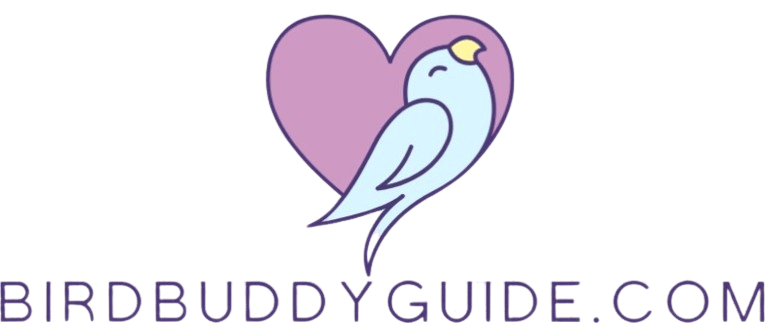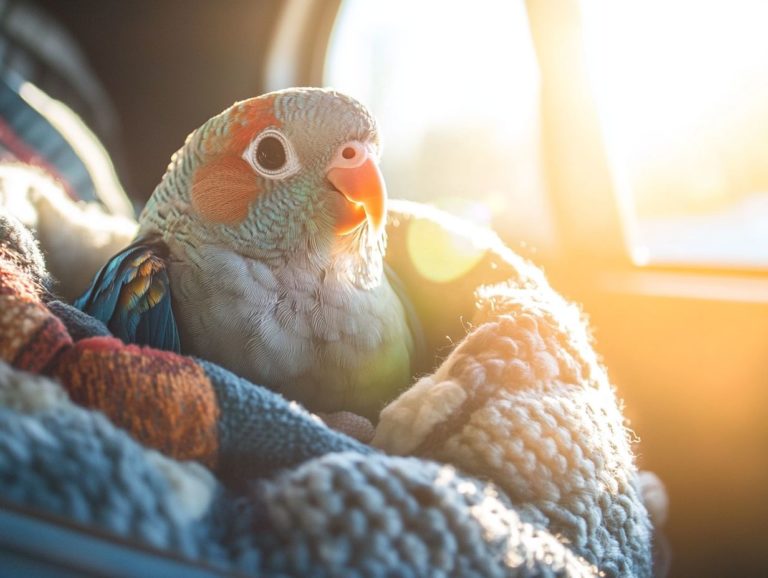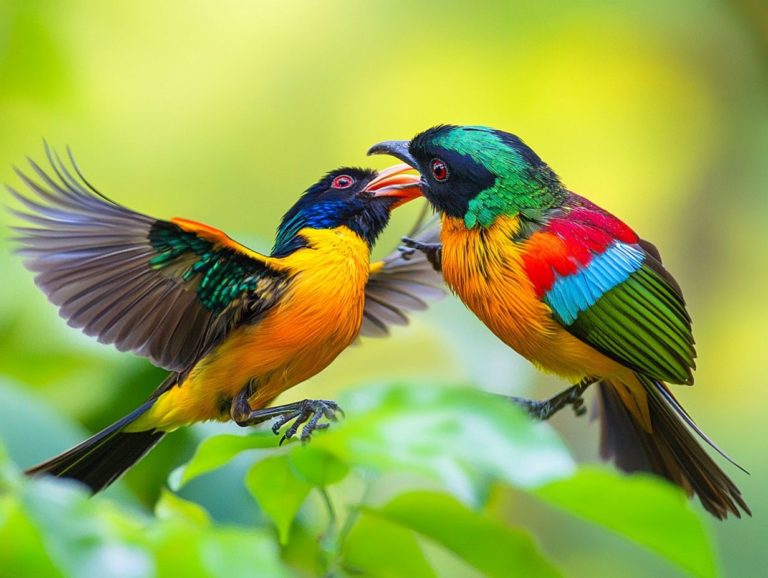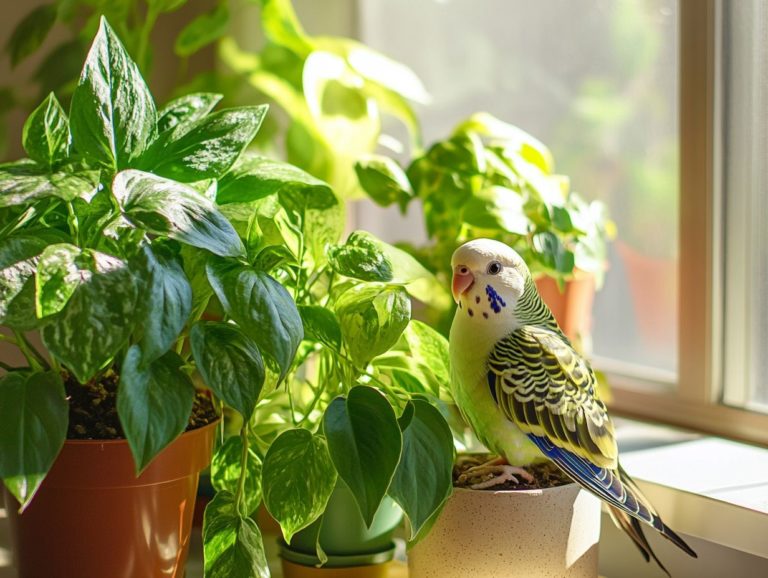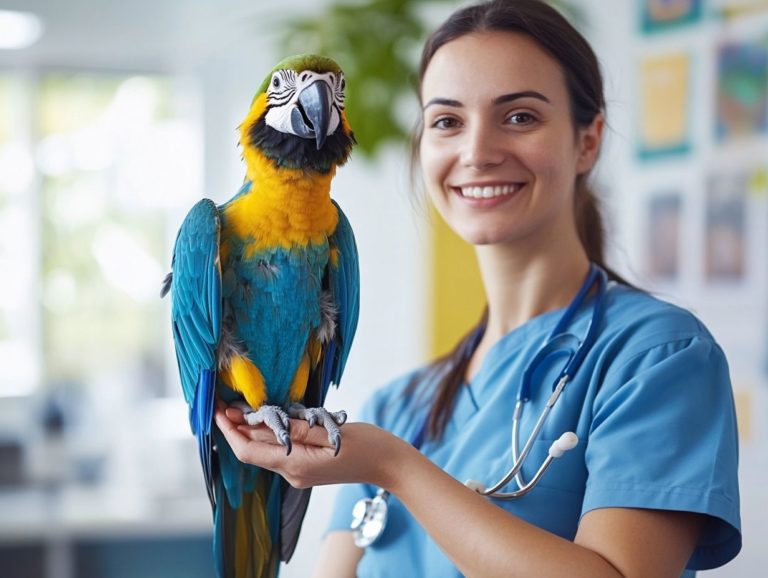What Is the Best Way to Handle a Bird?
Birds can be truly captivating companions, showcasing distinctive behaviors that unveil their personalities and needs. Understanding their bird behavior is key for all pet bird owners who want to train their birds effectively.
Whether you re an experienced bird owner or just starting your avian journey, grasping these behaviors is essential for fostering a meaningful connection through effective bird communication.
This guide explores common bird behaviors, offers safe bird handling techniques for small and large birds, and shares insights on crafting a comfortable environment that promotes bird health. By the end, you’ll know how to engage with your feathered friend confidently and compassionately, utilizing positive reinforcement strategies!
Contents
Key Takeaways:
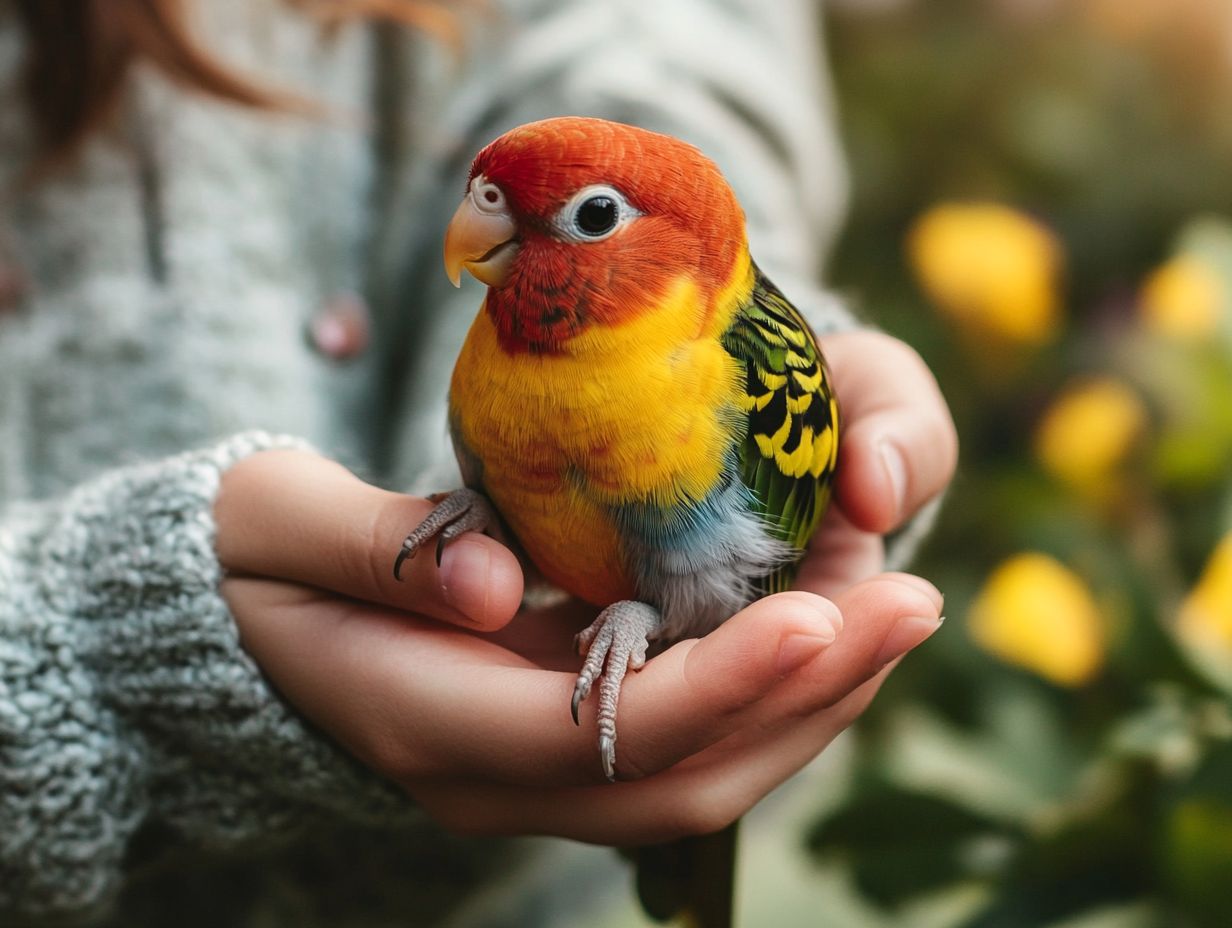
- Knowing the common behaviors of birds can help you understand their needs and avoid harmful situations.
- Different types of birds require different handling techniques, so it’s important to be familiar with the specific needs of your bird.
- Creating a safe and comfortable environment, approaching the bird slowly and calmly, and establishing trust are key steps for safely handling and bonding with your bird!
Understanding Bird Behavior
Numerous factors, including body language, vocalizations, and environmental stressors, shape your bird’s behavior and overall bird health. By recognizing these cues, you can alleviate anxiety and enhance the well-being of your feathered companion.
Whether you have a Parrot, Cockatoo, or Amazon, grasping their unique behaviors enables you to utilize positive reinforcement techniques. This enriches your bird training experience and ensures you handle your pet with care and consideration, focusing on bird comfort.
Common Bird Behaviors and Their Meanings
Common bird behaviors can reveal essential insights into your pet’s mood, health, and needs, enhancing trust building.
By closely observing these behaviors, you can learn how to respond to your feathered friend more effectively. For instance, when you see your bird preening, it’s not just grooming; it often indicates comfort in its environment, contributing to its overall bird safety.
As for vocalization, pay attention to different sounds. Chirps might express excitement, while softer whistles could denote contentment or calmness. That wing flapping? It s not just about flight; it can also serve as exercise or a way to release pent-up energy, promoting better bird health.
Grasping these signals is crucial for effective bird communication, allowing you to provide positive reinforcement that strengthens the bond between you and your bird!
Handling Techniques for Different Types of Birds
Handling techniques differ considerably between small and large birds, and understanding these distinctions is vital for ensuring your feathered friend s safety and comfort.
Whether you re engaging with a delicate finch or a robust Amazon parrot, using the appropriate handling techniques can build trust, alleviate bird anxiety, and enhance your interactions.
Recognizing the unique needs and behaviors of each species and adopting a gentle approach to bird handling is essential for their overall well-being.
Start applying these tips today to enhance your bond with your feathered friend!
Small Birds vs. Large Birds
When handling birds, you will find that small birds like finches and canaries require a different approach compared to their larger counterparts, such as cockatoos and parrots. This difference is particularly evident in bird restraint due to their diverse behaviors and physical traits.
For instance, smaller birds are often more fragile and can easily become frightened. Therefore, you need to be gentle to prioritize their comfort and security. In contrast, larger birds usually have stronger personalities and may require a more assertive handling technique. Understanding their behavior is essential; smaller species thrive in quiet environments, while larger birds enjoy interactive settings that promote petting.
Recognizing this distinction is key to developing effective handling strategies tailored to each bird’s unique needs. This thoughtful approach fosters trust and significantly reduces stress for your feathered friend during interactions.
Preparing to Handle a Bird
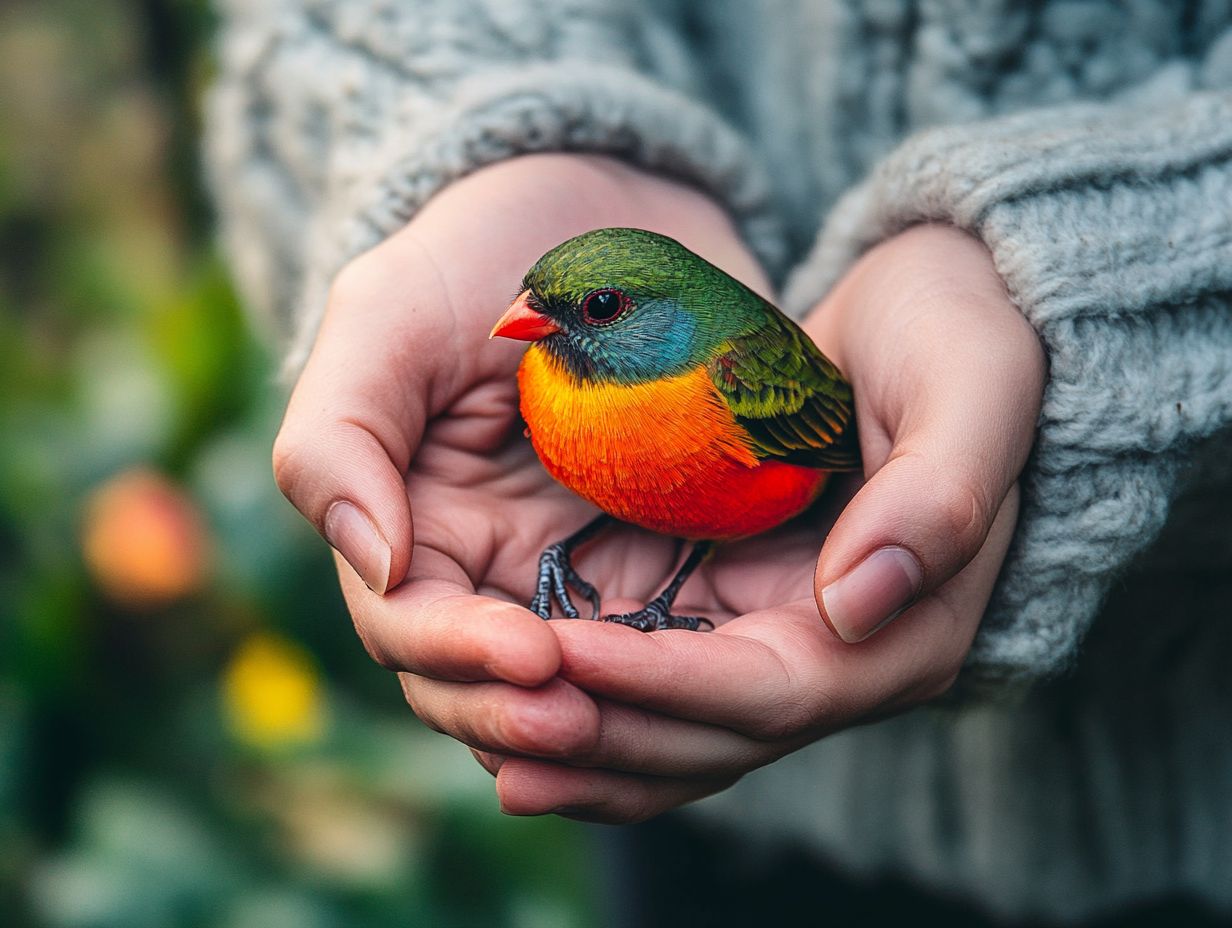
When you prepare to handle a bird, you can get started by creating a safe and comfortable environment that minimizes bird anxiety and fosters trust between you and your feathered companion. This preparation involves establishing a quiet space free from distractions, using suitable handling techniques, and ensuring that both you and the bird remain calm, which is important for bird safety.
A gentle approach is essential for significantly reducing stress for the bird and enhancing the overall handling experience.
Creating a Safe and Comfortable Environment
Creating a safe and comfortable environment for your bird is an essential first step in effective handling. This approach instantly reduces anxiety and sets the stage for great interactions.
To achieve this, focus on several key elements that can significantly enhance your bird’s well-being and promote its health. Ensure the cage setup is spacious enough for movement and includes perches, toys, and safe materials that encourage natural behaviors. Maintaining an ideal temperature typically between 65 F and 80 F keeps them comfortable and stress-free.
Proper lighting is crucial as well; providing a natural light cycle helps regulate their circadian rhythms (the body’s internal clock that regulates sleep and activity cycles), which is vital for their overall health.
When you implement these thoughtful considerations, you not only ensure safety but also actively contribute to their emotional health. This creates a harmonious living space that both you and your feathered friend can enjoy, enhancing bird comfort.
Step-by-Step Guide to Handling a Bird
A step-by-step guide to bird handling requires you to grasp the intricacies of bird training to ensure bird safety. You will learn how to effectively teach your pet bird to ‘step up’ and engage in physical interaction, paving the way for a mutually rewarding experience.
This process deepens the bond between you and your feathered friend while establishing a solid foundation for successful training through reward-based techniques, reinforcing positive interactions.
Approaching the Bird
Approaching a bird requires you to understand its behavior and employ a gentle strategy that respects its comfort level and instincts, ensuring a successful handling process.
Birds are incredibly perceptive creatures; they can pick up on your body language and demeanor, influencing their response to your handling. When you approach, move slowly and avoid any sudden movements that might startle them. Maintaining soft eye contact conveys a sense of calm, while positioning your body sideways may ease any perceived threats.
Verbal cues delivered in a soft, soothing tone can reassure the bird and create a sense of safety. By observing subtle shifts in the bird s posture and breathing, you can adapt your approach, ultimately fostering a more trusting interaction.
Picking Up and Holding the Bird
Picking up and holding a bird correctly is essential for its comfort and safety. It also minimizes potential stress or anxiety during handling.
Follow straightforward guidelines for a positive experience for both you and your feathered companion. Approach the bird calmly to avoid startling it.
Gently extend your hand to invite the bird to you. When you grasp it, use a light yet secure hold around its body.
Avoid applying pressure on its wings or tail. This gentle restraint makes the bird feel secure rather than threatened.
Keep the bird close to your body for warmth and reassurance. Use treats to encourage good behavior and help the bird associate handling with positive experiences.
Releasing the Bird
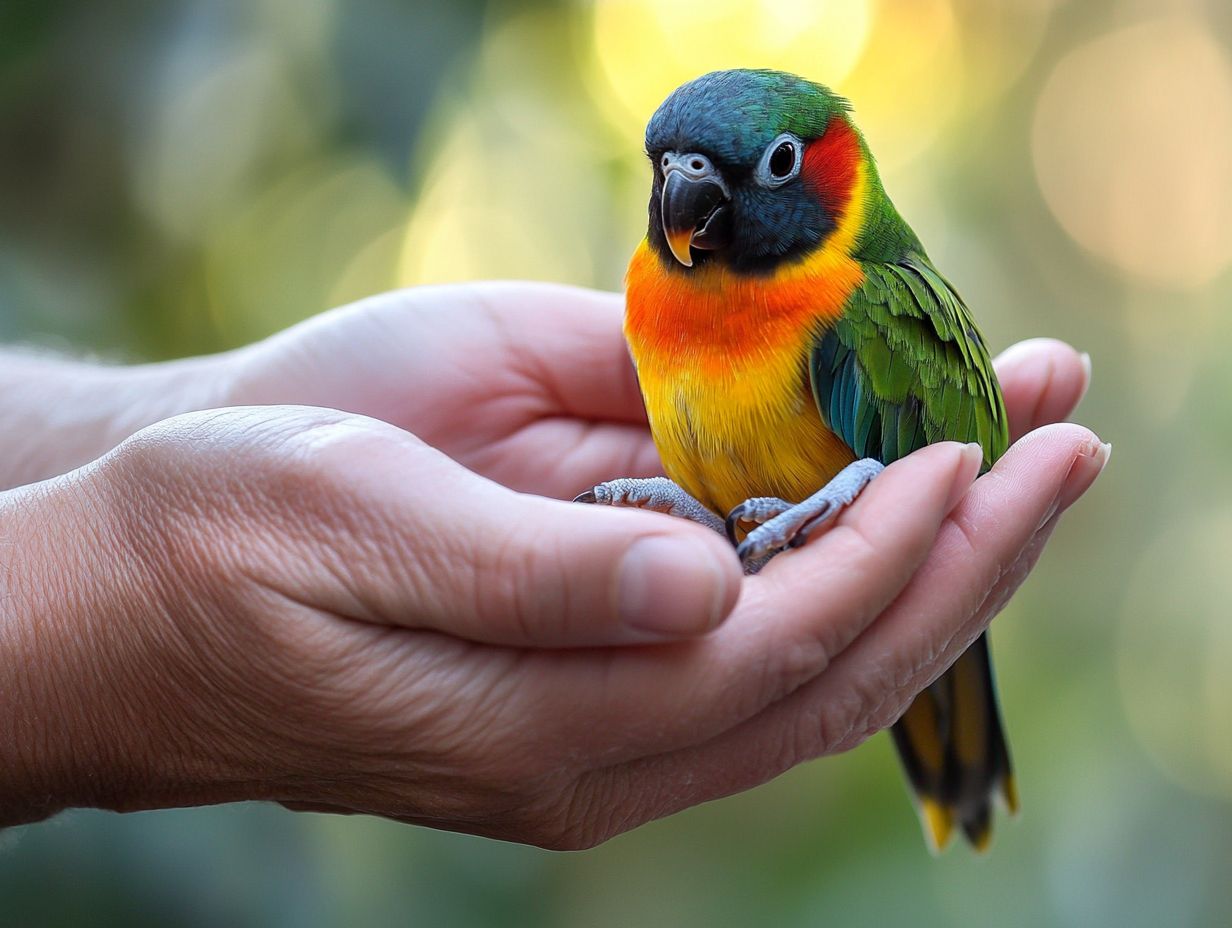
Releasing a bird after handling is crucial. It ensures the bird s safety and comfort while reinforcing trust between you and your pet.
Select a calm environment away from loud noises and potential predators. These factors can elevate bird anxiety and compromise its sense of security.
Allow the bird to gradually acclimate to its surroundings. When it’s time to let the bird go, open the carrier slowly.
Give it the freedom to fly out when it feels ready. This fosters a sense of control and enhances trust.
Maintain a gentle demeanor throughout this process. This can significantly boost your bond and instill confidence.
Tips for Safe and Effective Bird Handling
Here are some bird handling tips for a successful experience. Use expert tips to enhance the experience for you and your feathered companion.
Employ handling techniques that prioritize the bird s safety. This approach minimizes anxiety and fosters harmonious interactions.
Dos and Don’ts
Understanding the dos and don’ts of bird handling greatly enhances your pet bird’s welfare. It nurtures a trusting bond between you and your avian companion.
Implement effective safety protocols by ensuring the bird’s environment is free from hazards. When you approach your bird, do so slowly and gently.
Allow the bird to assess its comfort levels. Use positive reinforcement techniques, such as treats or praise, to encourage desired behaviors.
Pay close attention to your bird’s body language. This is a vital indicator of how your feathered friend is feeling.
Avoid sudden movements and loud noises that might startle it. Strive to provide a calm and reassuring presence during handling sessions.
Building a Bond with Your Bird
Building a bond with your bird requires a commitment to consistent handling and effective communication. Use positive reinforcement techniques for nurturing trust.
These practices are essential for cultivating a positive relationship between you and your feathered friend.
Tips for Establishing Trust and a Positive Relationship
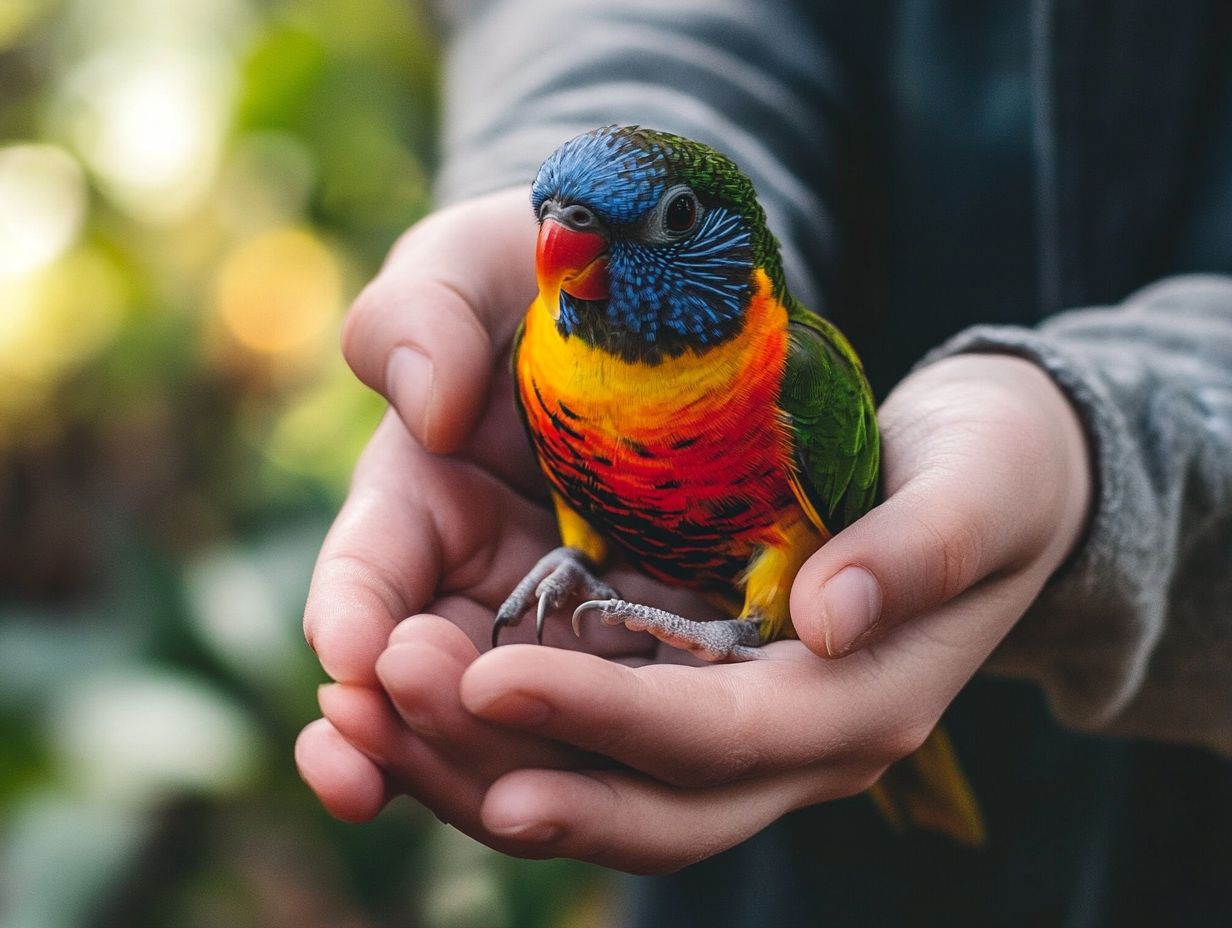
Establishing trust and a positive relationship with your bird requires patience and understanding. Consistent communication is key to helping your pet feel comfortable and secure.
To build this bond, use techniques like reward-based training. This means giving treats and praise when your bird behaves well, including the important step up command. Recognize that each bird has a unique personality; some may take longer to warm up than others.
Creating a safe and fun environment boosts your bird’s confidence and encourages them to explore!
Simple actions like speaking softly during interactions and maintaining consistent routines can significantly improve bird communication. These efforts will create a more fulfilling and enriching relationship.
Frequently Asked Questions
What is the best way to handle a bird?
Approach a bird slowly and calmly, using gentle movements. Offer your hand as a perch for the bird to step onto, and avoid grabbing or squeezing. For those planning to take their feathered friends on the go, it’s important to know the best way to travel with a bird.
Can I pick up a wild bird?
Avoid picking up wild birds. It can be risky for you and the bird. Enjoy observing them from a distance.
How do I handle a scared bird?
If a bird is scared, give it space. Avoid sudden movements or loud noises. Speak softly and approach slowly, allowing the bird to calm down before trying to handle it.
What should I do if a bird bites me?
If a bird bites you, remain calm. Slowly remove your hand from its grip; do not pull away quickly as this can cause more harm. Clean the bite and seek medical attention if necessary.
Is it safe to handle a sick bird?
No, it’s not safe to handle a sick bird as it can spread disease to humans. If you spot a sick bird, don’t hesitate! Contact a local wildlife rehab center for help!
How can I train my bird to be handled?
Training a bird to be handled takes time and patience. Start by offering treats and positive reinforcement. Use bird training techniques when the bird allows you to touch it. Gradually increase the amount of handling while listening to the bird’s cues for breaks.
